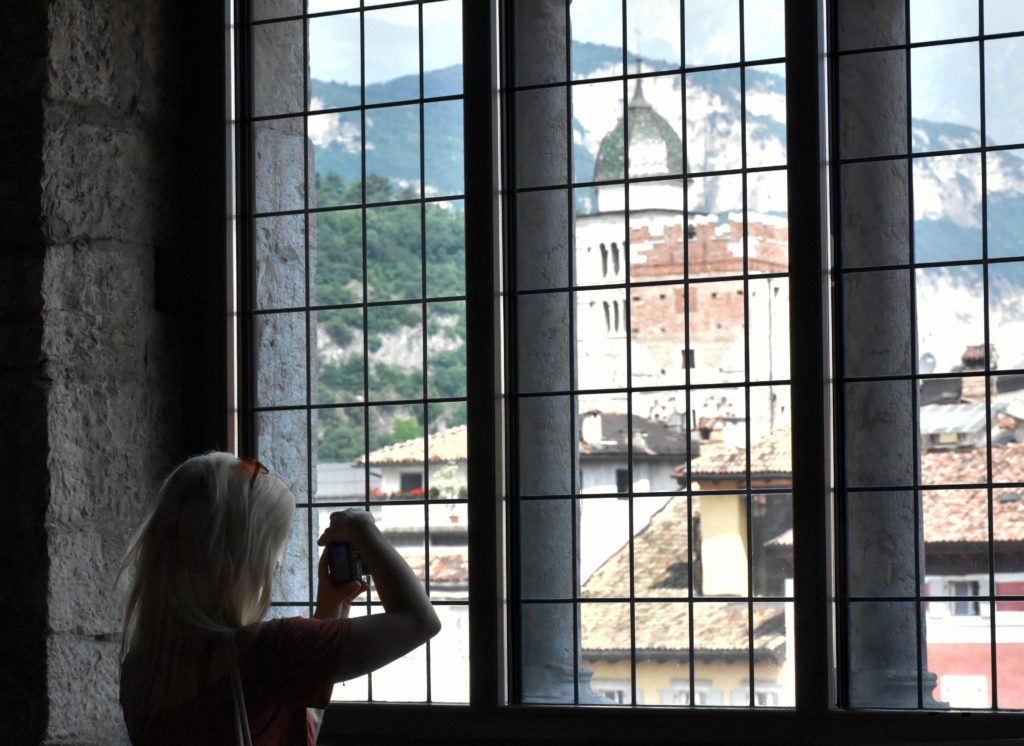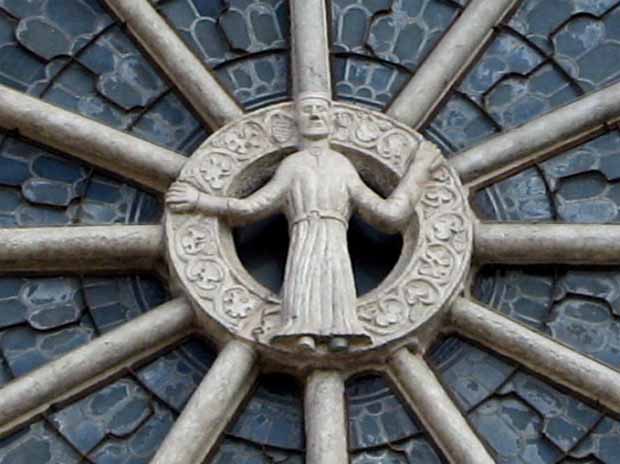CATHEDRAL OF SAINT VIGILIUS
Begun in 1212 and completed in 1321, this structure rose along the road to Verona, at the site of the ancient Basilica of Saint Vigilius. The basilica was originally built around the end of the fourth century as a sepulcher for the missionaries Sisinnius, Martyrius, Alexander, and the saint himself.
he decision to replace the basilica with the new Cathedral was made by Bishop Federico Vanga, who gave the task to the builder Adamo D’Arogno. The skill of the artists who succeeded each other over generations is shown by their ability to merge very different eras and styles (from late Romanesque to Gothic) into a single building.
Among the most significant features are the fresco of the legend of Saint Julian the Hospitaller, and the rose window. The fresco is on the north transept, with his mother’s farewell and his entry into the city. The window is on the transept overlooking the square and is called the “wheel of fortune”, a recurring motif in medieval art; it was masterfully built at the end of the thirteenth century. Also noteworthy is the beautiful Baroque canopy which takes up the idea of the Vatican Basilica canopy in Rome.
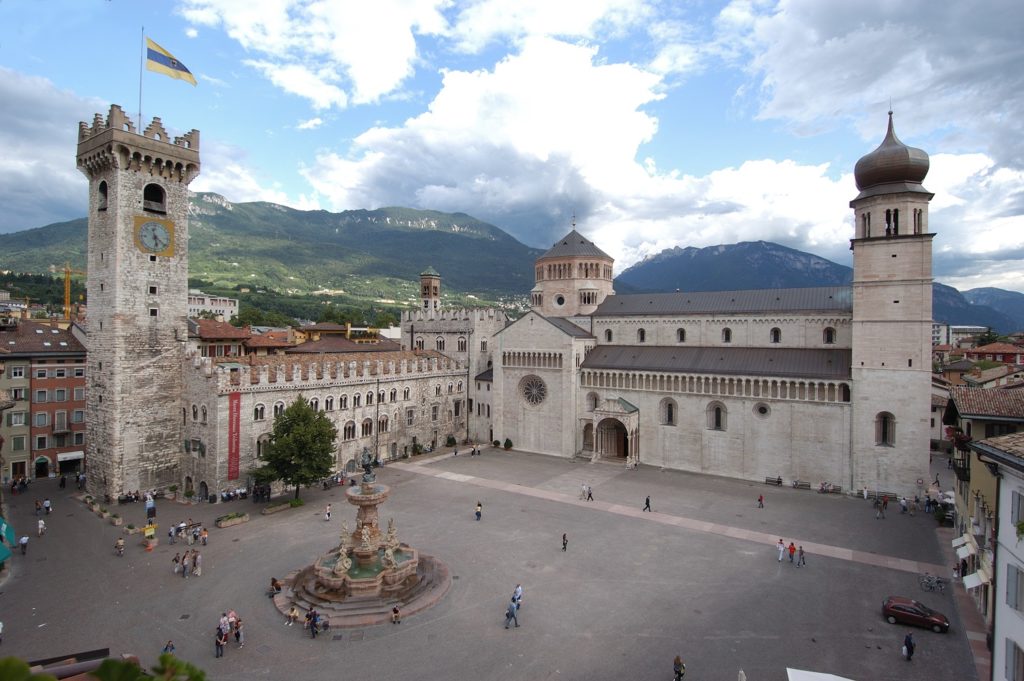
The Cathedral has hosted some important events, such as the coronation of Maximilian of Habsburg in 1511, and the Council of Trent, from 1545 to 1563.
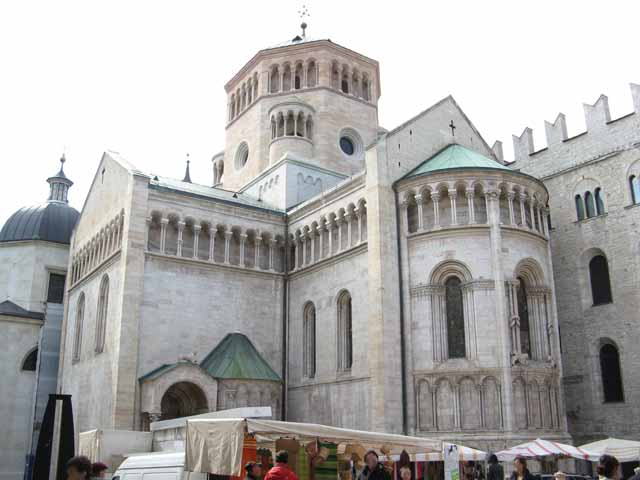
TRIDENTINE DIOCESAN MUSEUM
In the heart of Trento, the museum is housed in the rooms of Palazzo Pretorio, the first bishop’s residence built next to the cathedral. The museum exhibits a magnificent heritage of art and culture from 11th to 19th century Trento province churches, more than 17,000 works. The route is enriched by an evocative passage that allows you to observe the nearby cathedral from above, and by the opportunity to visit the underlying archaeological space of Porta Veronensis.
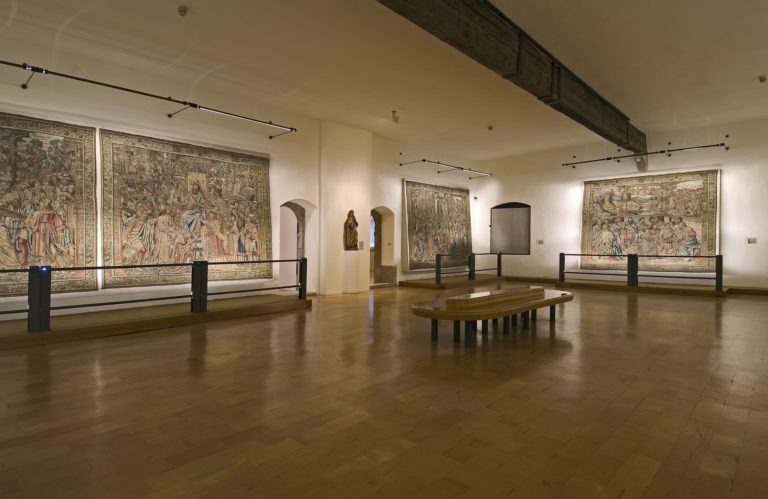
VISITING THE TOMBS AND THE REMAINS OF THE BASILICA
Between 1964 and 1977, excavations under the cathedral revealed the remains of the ancient early Christian Basilica of Saint Vigilius, built outside the Roman city walls, presumably towards the end of the fourth century AD. The building owes its origin to the burial of Saints Sisinio, Martirio and Alessandro, killed in Val di Non by the pagans on May 29, 397. A few years later, Saint Vigilius, the third bishop and patron of the regional capital, was buried alongside the three martyrs. The ancient place of worship was at first a cemetery basilica, or a sanctuary with an essentially commemorative function. It became a cathedral between the ninth and tenth centuries, when the episcopal palace was moved to its immediate vicinity.

